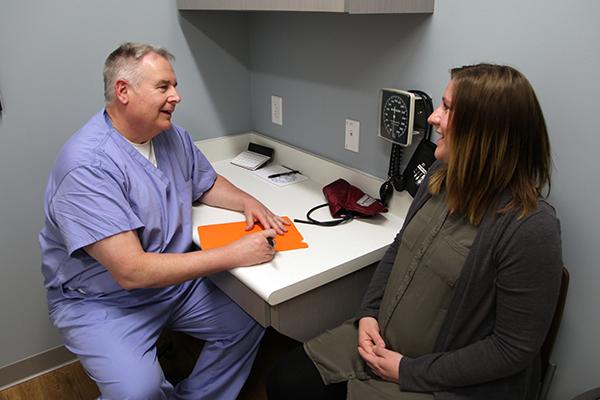Lochia is the term used to describe the normal vaginal discharge that you will experience after giving birth. It is a mixture of blood, mucus, amniotic fluid and uterine tissue, and it can last for several weeks as your body adapts to life after childbirth.
Your discharge will likely be heavier in the first few days after childbirth before becoming lighter until it fully subsides. Lochia is a normal part of the postpartum healing process, but at the same time, you’ll want to monitor your discharge to ensure that there are no indications of a problem. Below, we take a closer look at the stages of lochia and what symptoms suggest you should reach out to your woman’s care provider.
The Stages Of Lochia
Lochia progresses through three stages as your body heals after childbirth. Here’s a closer look at each stage:
-
Lochia Rubra – Lochia rubra is the first stage of lochia, and it is when discharge is the heaviest. You can expect dark or bright red discharge, similar to that of a heavy period, and you may even expel some small clots. This can occur over the course of a few days and may also present with mild to moderate cramping.
-
Lochia Serosa – The second stage is called lochia serosa, and you’ll begin to notice that your discharge is beginning to look a little more mild. It may take on a pinkish brown appearance, look less bloody and have a thinner consistency. This discharge tends to last for about 4-12 days, and you should notice less clotting or the absence of any clots in your discharge.
-
Lochia Alba – The final stage is called lochia alba, and it occurs when the discharge turns yellowish or whitish. There is little or no blood in your lochia and your flow is much lighter. The last stage is the longest, lasting anywhere from 2-6 weeks. There should not be any clots in your lochia at this stage.
Signs Of Abnormal Lochia
You’ll have a lot on your plate in your first few weeks following the delivery of your child, but you’ll want to be mindful of some of the signs or symptoms that suggest that there may be a problem with your postpartum recovery. Oftentimes your lochia can indicate that there is an issue that warrants medical attention. Some symptoms that suggest that you should consult with your women’s care provider or OBGYN include:
-
The passage of large clots (roughly the size of a golf ball)
-
Excessive bleeding (going through a pad in less than an hour)
-
Foul or fishy smelling discharge
-
Nausea, chills or fever-like symptoms
-
Blurred vision
-
Dizziness
-
Significant or painful cramping
If you are experiencing any of the above symptoms, you’ll want to reach out to your women’s care provider in short order. These symptoms may suggest that you are dealing with an infection or a postpartum bleeding issue that warrants attention. Your women’s care provider can ensure any potential issues are treated before they have a chance to cause major health problems.
If you have questions about your lochia or other postpartum issues, reach out to the team at MetroPartners OBGYN today at (651) 770-3320.

